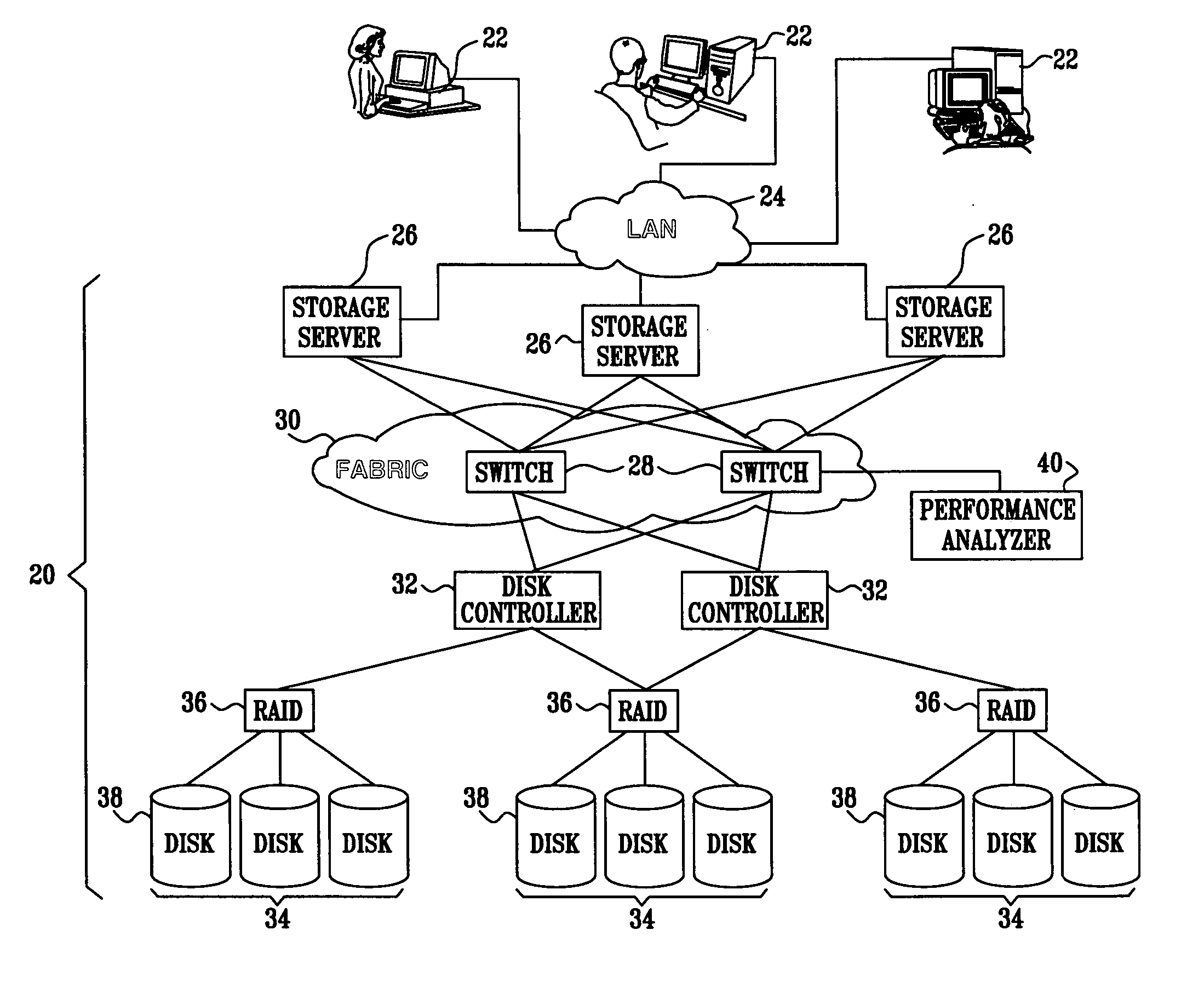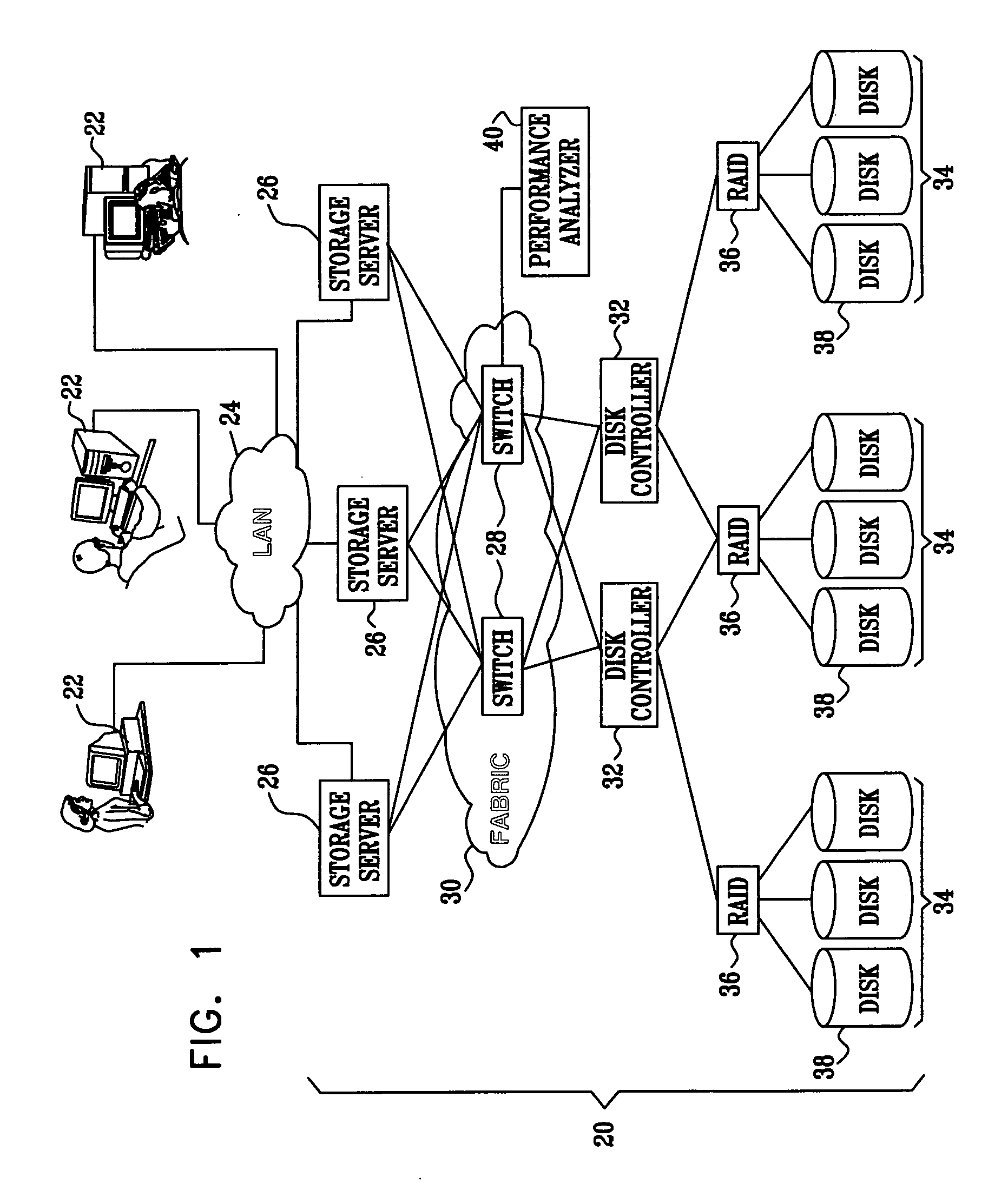Root-cause analysis of network performance problems
a root cause analysis and network performance technology, applied in the field of computer systems and networks, to achieve the effect of reducing the computational burden of finding
- Summary
- Abstract
- Description
- Claims
- Application Information
AI Technical Summary
Benefits of technology
Problems solved by technology
Method used
Image
Examples
Embodiment Construction
[0031]FIG. 1 is a block diagram that schematically illustrates a storage area network (SAN) 20 with a performance analyzer 40, in accordance with an embodiment of the present invention. The SAN is optimized for carrying only I / O traffic between storage servers 26 and storage devices 34, and possibly among the storage devices themselves. Application traffic to and from clients 22 is carried by a separate messaging network 24, such as a local area network (LAN) or wide area network (WAN).
[0032] Typically, storage servers 26 communicate with storage devices 34 in SAN 20 via one or more switches 28, which are commonly arranged as a switching fabric 30. Access to storage devices 34 is carried out through disk controllers 32, such as the IBM Sharks controller. The storage devices themselves may comprise substantially any type (or multiple types) of storage media, such as magnetic disks or tape or optical media. For the sake of simplicity in the present example, the storage devices are as...
PUM
 Login to View More
Login to View More Abstract
Description
Claims
Application Information
 Login to View More
Login to View More - R&D
- Intellectual Property
- Life Sciences
- Materials
- Tech Scout
- Unparalleled Data Quality
- Higher Quality Content
- 60% Fewer Hallucinations
Browse by: Latest US Patents, China's latest patents, Technical Efficacy Thesaurus, Application Domain, Technology Topic, Popular Technical Reports.
© 2025 PatSnap. All rights reserved.Legal|Privacy policy|Modern Slavery Act Transparency Statement|Sitemap|About US| Contact US: help@patsnap.com



